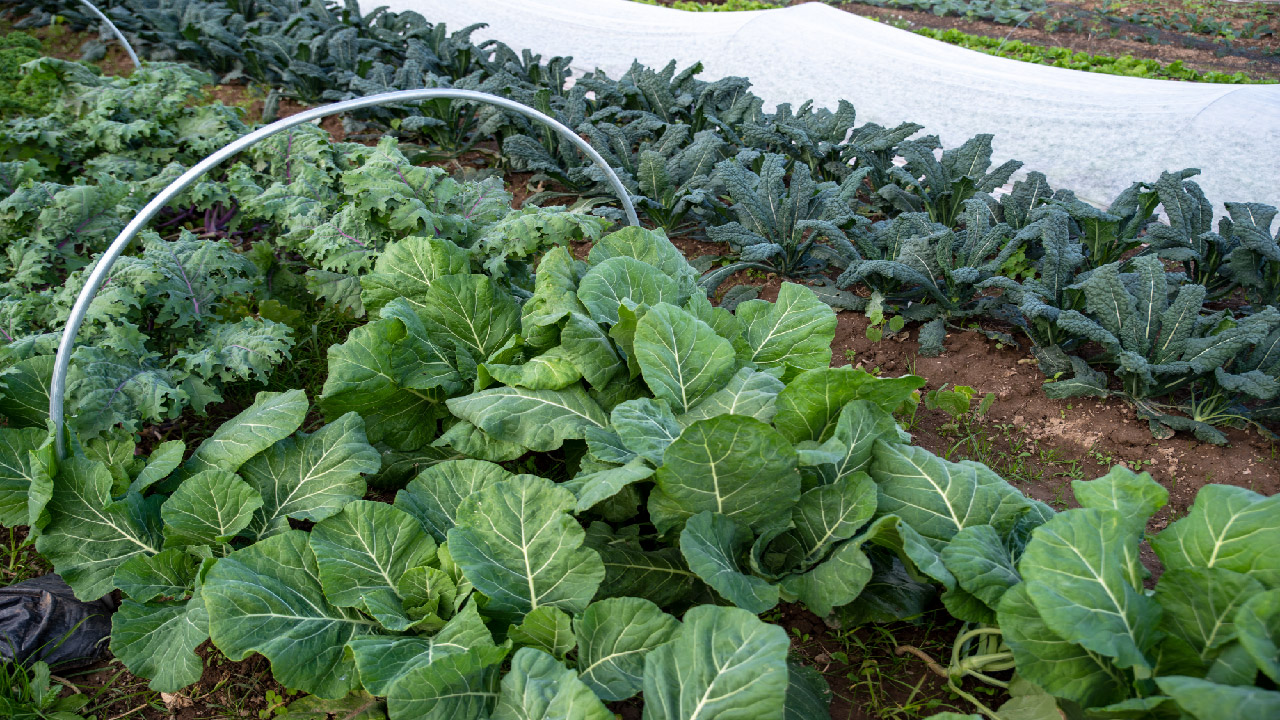Top Ten Vegetables for Your Garden 2023
Mar 16th 2023
The days are getting longer and we're all getting ready for gardening weather. Once the last frost has passed, the growing season has begun! People garden for many reasons, but one of the most popular is to grow fresh, local produce for the whole family or neighborhood (especially when the zucchinis begin to ripen). Fruit, veggies, herbs, and flowers are all important for maintaining biodiversity in the garden, but fresh vegetables are some of the most satisfying crops to grow. A piece of advice: most veggies require full sun instead of partial sun. Here is your ultimate list of the top 10 vegetables to grow in your garden for 2023:
- Potatoes: One of the best vegetables you can grow is potatoes. Nutrient-dense, versatile, and high in calories, potatoes can last for months when properly stored. They are easy to grow and can be easily adapted for urban garden settings by utilizing five-gallon buckets or grow bags. There are nearly endless varieties of potatoes, all with a slightly different flavor. One of the most versatile kinds is the Yukon Gold potato, which tastes great mashed, roasted, fried or even in soups.
- Onions: Another excellent pantry staple, onions add delicious flavor and a burst of nutrients to whichever dish you're cooking. Once harvested and cured in a warm, dry spot for a few days, onions are easily stored in a cool, dry location. If onions aren't quite your cup of tea, leeks and shallots are both in the same botanical family (Allium).
- Leafy Greens: For a hearty dose of nutrition without many calories, leafy greens cannot be beat. There are many varieties that can grow all throughout the season. Spinach is a very cold-hardy green that can be planted in the early spring and late fall. Kale can be grown in both the spring and fall as well because the cool weather increases the flavor and sugar content of the leaves. Lettuce is best eaten fresh, so it is beneficial to make a few small sowings instead of one large one. Proper irrigation of leafy greens leads to healthy plants and maximum yields, so drip irrigation is highly recommended to avoid rot and increase productivity.
- Tomatoes: Grocery store tomatoes are chosen for their hardiness, not their flavor profile, so it can be a delicious idea to grow tomatoes at home for a burst of flavor that can be hard to find in stores. Tomatoes are an excellent crop to grow for canning, as its high acidity helps to prevent botulism. From salsa to pasta sauce, pizza sauce, tomato paste and more, tomatoes are a versatile kitchen plant that adds tremendous flavor to recipes. Starting tomatoes from indoor seeds a few weeks before the last frost is the best way to ensure they have time to mature before the end of the season, especially if you live in a northern climate.
- Summer Squash: As many seasoned gardeners can attest, zucchini and summer squash are some of the most bountiful crops around during peak season in the summertime. Some home gardeners have so many, they have a hard time giving them away to neighbors, who have the same problem! This makes summer squash an excellent food to have on hand, even for those gardeners without a green thumb. During the height of the season, the squash can be used on the grill, for kebabs, salads, soups, and pizzas, and even frozen for the cooler months when you need a taste of summer.
Squash is part of the original companion planting trio of corn, beans, and squash, also known as the three sisters in many native cultures. - Carrots: Carrots are a family favorite vegetable in many homes. This sweet root crop packs a ton of nutrition in a small package. Full of fiber, antioxidants, beta-carotene and more, carrots are an excellent choice to grow yourself. Whether you want to use them as a quick snack or add them to a week-night stir-fry, carrots will give that signature crunch.
- Garlic: Essential for adding a savory punch to recipes, garlic also will last for months when stored properly. Traditionally used in many folk healing remedies, garlic has many beneficial properties for heart health, your immune system and athletic performance.
- Cabbage: When talking about long-term storage, fermented cabbage is one of the best foods to have on hand. Sauerkraut is easy and inexpensive to make at home, especially if you grow the cabbage yourself. With few calories and high nutrition content, green and red cabbages are a great addition to any garden.
- Cucumber: Hydrating and fresh, cucumbers are one of the most quintessentially summer foods you can grow. Excellent in salads or turned into pickles, cucumbers grow prolifically in the garden. Its high-water content coupled with vitamins and minerals help it to hydrate your cells even better than plain water.
- Sweet Potatoes: Sweet potatoes, not to be confused with regular potatoes, provide a filling, nutritious and long-lasting root vegetable that can last for months when stored properly. Harvested directly from the soil, sweet potatoes are calorie-dense and can be used in both sweet and savory dishes.

